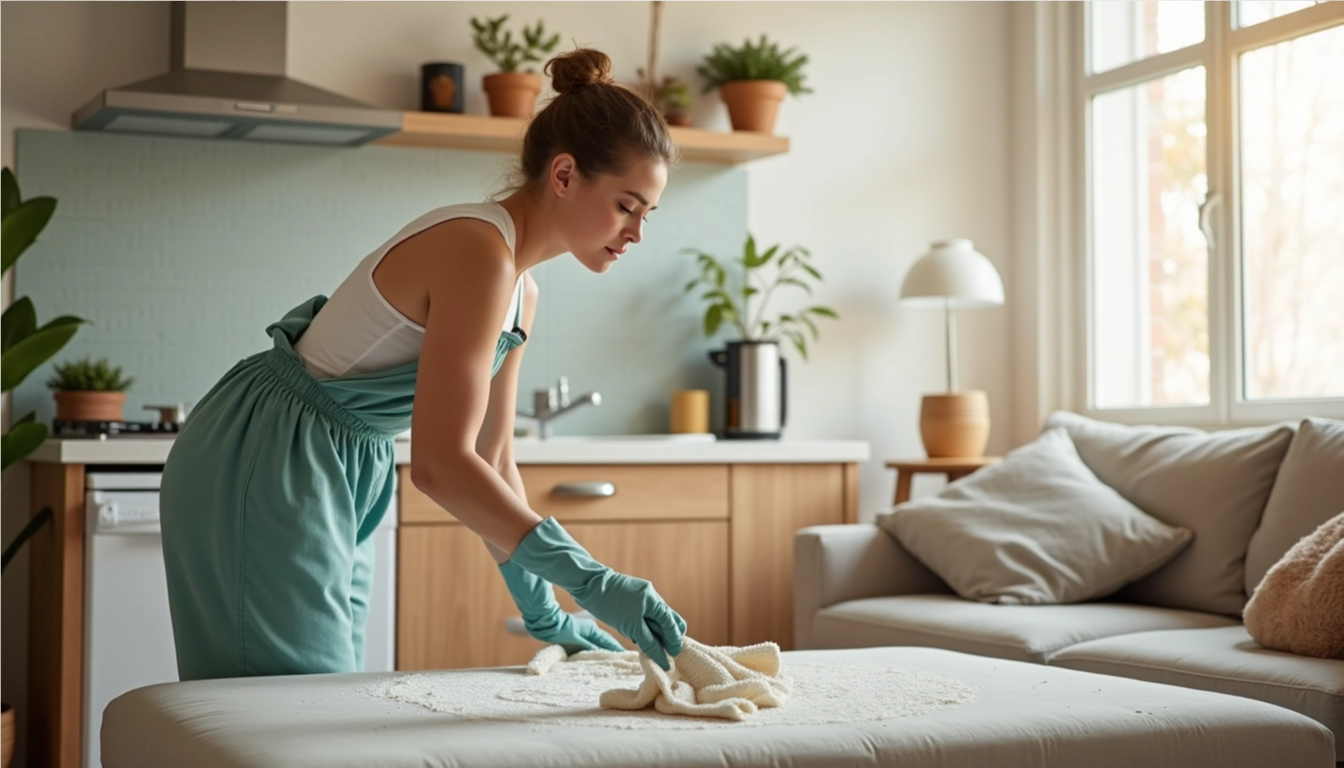
When we think of cleaning our homes, most of us focus on the obvious areas—kitchen counters, bathroom sinks, and floors. But what about the everyday objects and surfaces we touch constantly, yet rarely clean? These often-overlooked areas are prime breeding grounds for bacteria, viruses, and allergens, and if neglected, they could silently be affecting your health.
In this article, we reveal the hidden germ hotspots in your home and explain why regular cleaning in these areas is crucial—not just for cleanliness, but for your overall wellbeing.
-
Light Switches And Door Handles
They’re among the most frequently touched surfaces in any home, yet how often do you actually clean your light switches and door handles?
These small surfaces accumulate bacteria and viruses, especially when someone is unwell. Pathogens like E. coli, staphylococcus, and even cold and flu viruses can survive on hard surfaces for hours, if not days.
Cleaning Tip: Wipe down switches and handles weekly using an antibacterial spray or a vinegar and water solution. Don’t forget cupboard handles and appliance knobs too.
-
Remote Controls And Game Controllers
TV remotes, gaming controllers, and stereo buttons are touched daily—often by multiple people—but rarely cleaned. Combine that with the habit of snacking while watching telly or gaming, and you’ve got a recipe for germ build-up.
Studies have found that remote controls can harbour more bacteria than toilet handles!
Cleaning Tip: Use disinfectant wipes or a cloth lightly dampened with rubbing alcohol to clean remotes and controllers. Pay attention to buttons, grooves, and battery compartments.
-
Mobile Phones And Tablets
Your mobile phone probably goes everywhere with you—from the loo to the kitchen—yet it’s rarely sanitised. Research has shown that the average phone can carry 10 times more bacteria than a toilet seat.
This is especially concerning given how often we touch our faces after using our phones, unknowingly transferring germs.
Cleaning Tip: Wipe screens and phone cases daily using a microfibre cloth and a solution of 70% isopropyl alcohol. Avoid excessive moisture to protect internal components.
-
Kitchen Sponges And Dishcloths
Ironically, the very tools we use to ‘clean’ are often some of the dirtiest items in the house. Sponges and cloths harbour bacteria like salmonella and campylobacter, which can easily spread across surfaces and utensils.
Cleaning Tip: Replace sponges regularly—ideally every 1–2 weeks. Between uses, microwave a damp sponge for 1–2 minutes to kill bacteria. Dishcloths should be washed at high temperatures (60°C or above) after each use.
-
Toothbrush Holders And Bathroom Accessories
Toothbrush holders, soap dishes, and the base of taps are often neglected during regular bathroom cleaning. Moisture and warmth make them the perfect environment for bacteria and mould to thrive.
Cleaning Tip: Wash holders and soap dishes with hot, soapy water weekly. Use an old toothbrush to get into grooves and corners. For added hygiene, store toothbrushes upright and ensure they dry between uses.
-
Under The Bed And Behind Furniture
Out of sight often means out of mind—but dust mites, allergens, and pet hair accumulate rapidly in areas you don’t regularly vacuum.
These allergens can worsen asthma, hay fever, and other respiratory conditions, especially during the night.
Cleaning Tip: Move furniture seasonally to vacuum behind and underneath. Use vacuum attachments to reach tight corners and edges. A HEPA-filter vacuum is best for allergy sufferers.
-
Curtains And Blinds
Fabric curtains and slatted blinds collect dust, pollen, and pet dander. Yet they’re rarely cleaned as part of a standard routine. Over time, these particles can affect air quality and irritate sensitive lungs.
Cleaning Tip: Vacuum curtains using a soft brush attachment once a month. Machine wash them every few months, following care labels. Wipe blinds with a damp cloth or use a specialist blind-cleaning tool.
-
Reusable Shopping Bags
With the rise in eco-conscious living, reusable bags are more popular than ever. But how often do you wash yours? After carrying raw food, meat packaging, or produce, these bags can quickly become contaminated.
Cleaning Tip: Wash reusable fabric bags in the washing machine regularly. Wipe plastic ones with a disinfectant cloth after each use.
Why These Hidden Germ Spots Matter
While these hotspots may not look dirty, bacteria and viruses are invisible to the eye. Letting them build up not only compromises hygiene but may contribute to:
- Food poisoning
- Skin infections
- Respiratory issues
- Worsening allergies or asthma
- Spreading viruses like colds and flu
Keeping on top of these areas reduces your exposure to harmful microbes and creates a healthier home environment for everyone.
Prioritise Your Health
A clean home isn’t just about appearances—it’s about health. By giving attention to commonly overlooked items and surfaces, you can significantly reduce your risk of illness, improve indoor air quality, and promote overall wellbeing.
Start Small: choose a few of these hotspots and work them into your weekly cleaning routine. It doesn’t take long, and your health will thank you for it.
